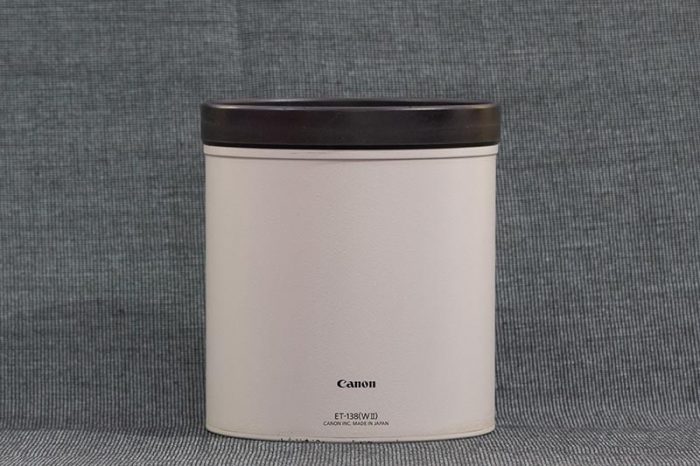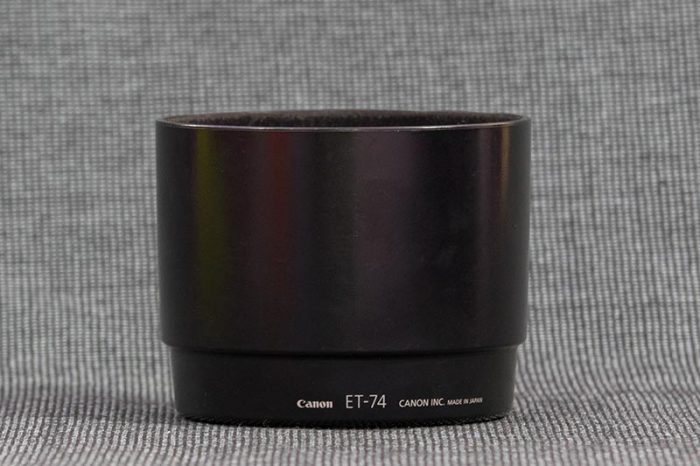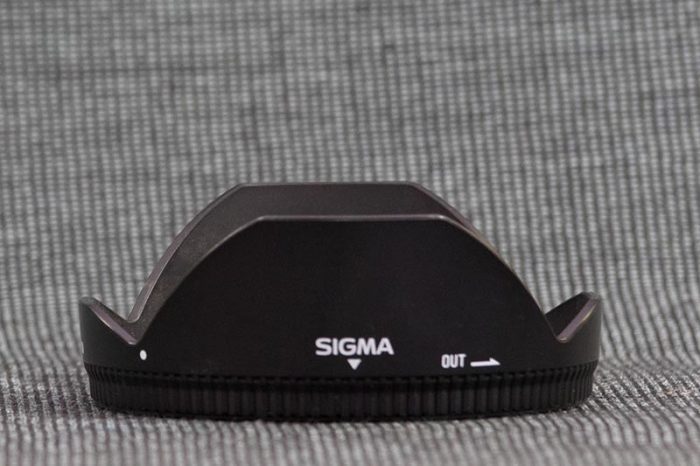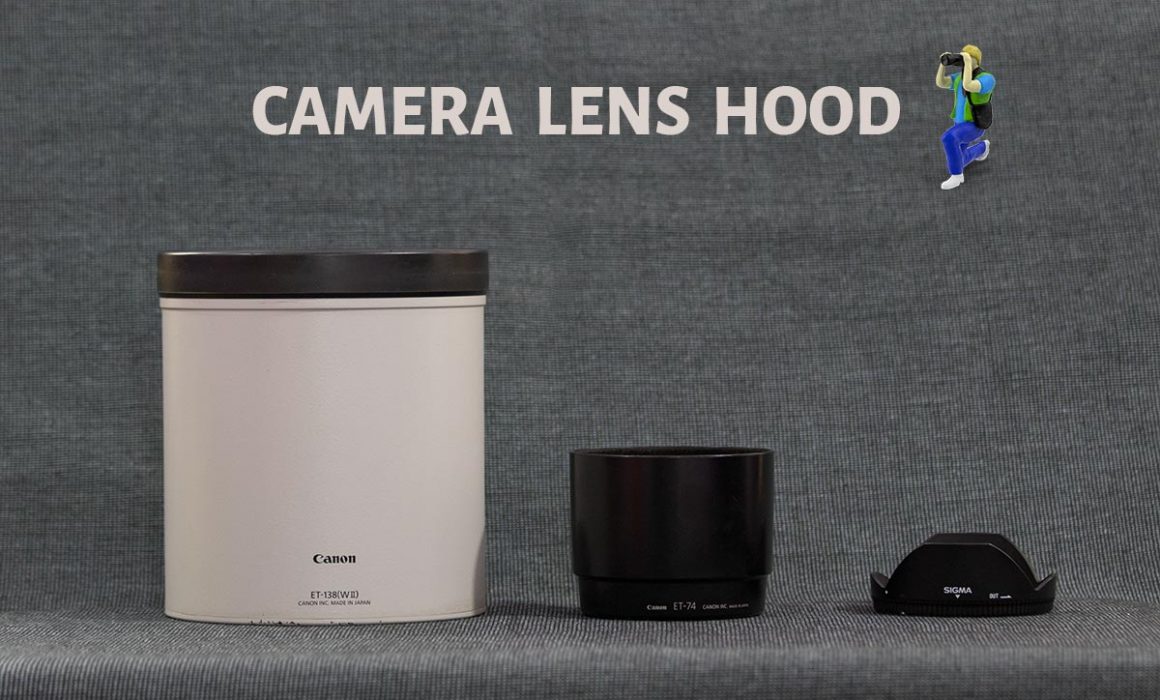Camera Lens Hood- When & How to Use It?
There are two types of photographers out there. The first type of photographer uses a camera lens hood as a fashion accessory and the others don’t like to use a hood since it makes the camera bulky. So, do you really need a camera lens hood? What is the purpose of a lens hood and how to use it? We will find the answers to all these questions in this article.
What is a Camera Lens Hood?
A camera lens hood is a camera lens accessory that you can attach in front of the lens. It can remove unwanted reflections of light and lens flare from entering the camera. It is also known as a lens shade. Most of the high-quality ones will come with a felt coating inside. This coating removes the unwanted internal reflection from the walls of the hood.
Different Types of Camera Lens Hoods
Let us have a look at the different types of lens hoods.
Classification Based on Type of Material
We can classify camera lens hoods into three types based on the type of material used for construction.
1. Plastic
The plastic lens hood is the most popular one. Most camera manufacturers who supply lens shade usually give a plastic lens hood along with the lens.
2. Metal

High-end telephoto lenses like the Canon or Nikon 400mm, 500mm, 600mm, and 800mm prime lenses come with metal lens hoods. They are costly when compared to other types.
If you lose one, then you need to spend more on the replacement. They add to the weight of the camera setup but are very good at doing the job.
3. Rubber Lens Hood
The camera manufacturers don’t supply a rubber lens hood along with the camera. You can purchase them from third-party vendors, and they are famous for their flexible feature.
Certain rubber lens hoods allow you to bend and fold them according to change in focal length, used with zoom lenses
Classification Based on Shape and Geometry
So far, we have seen the classification based on material type. Now, let us have a look at the different classifications based on shape and geometry.
1. Cylindrical
They come in cylindrical in shape, tube-like structure. Most of the metal hoods are cylindrical.
Canon ET-138 (WII) is an example of a cylindrical type metal hood, and it comes with Canon 500mm f/4 L ISII lens.
2. Conical

Most of the camera lens hoods are conical in shape.
Canon ET-74 is an example of a conical type. It comes along with Canon 70-200 F/4 lens and is made up of plastic with a felt coating inside.
3. Petal-shaped Hood

Wide-angle lenses come with flower-shaped petal hoods. It makes the camera look more stylish and professional. They are also known as Flower hoods.
Petal hoods have better performance in blocking unwanted light when compared to other types. This shape matches the camera sensor size and aspect ratio.
So, you need to be careful while placing this type of hood. If wrongly placed then the edges of the shade may become visible in the actual image.
4. Foldable Lens Hood
It is the Lenscoat brand, that came up with this unique design of travel lens hoods that can be folded and kept. It is a suitable replacement for the round metal ones used along with the big prime telephoto lenses.
Whenever you want to use it, you need to place it and cover it along the circumference of the lens at its end.
It is handy if you want to remove the unnecessary weight of the metal hood. A foldable travel lens hood will help in eliminating glare and flare. But, it will not provide the same level of protection as the metal one since it is collapsible.
What does a Lens Hood Do?
It is capable of doing the following things.
1. Removes Lens Flare and Glare
Lens flare is an unwanted phenomenon that happens when you shoot against the light directly. It results in artefacts in the image.
A lens hood stops the unwanted light from entering the lens. So, next time when you are shooting against the sunlight, then use a camera lens hood with your camera lens to avoid the lens flare effect on the image.
Light rays coming from the sides can make the picture look slightly hazy, or the image would lack contrast. You can block this unwanted side light from entering the camera by using a lens hood. It will help to improve the image contrast.
2. Protect Camera Lens
It protects the camera lens from accidental knocks against other subjects. The hood can even save the lens sometimes against accidental drop too; provided the camera lens is with the lens hood in the open state.
It also helps to protect the front glass of the lens from dirt and fingerprints, since it blocks your direct access to the front of the lens. Thus, you will have better-quality images.
3. Make the Camera Look Stylish and More Professional
There are many photographers out there who use the camera lens hood to give better looks to their camera. All camera lenses don’t come with a lens hood.
If you want to make your camera gear more stylish, then you can order one. You need to ensure that the hood size matches the thread size of the camera lens. So, you cannot use the same lens hood with all your camera lenses.
How to Use a Lens Hood?
You need to attach the hood to the front of the lens. Most camera lenses will have a lens hood thread in the front part of the camera lens. It is not the same as the filter thread part. This thread comes outside the filter thread.
You need to place the hood in front of the lens and rotate it in the clockwise direction until it gets locked. If it is not secured correctly, then the chances of losing the hood are more.
Bigger lens hood uses a different technique. There will be a rotating knob on the hood side, where it gets attached to the lens. You need to place the hood on the front of the camera lens and start rotating the knob to secure it.
Once you have attached the lens hood, you can start shooting.
When you pack your camera gear and store it, you can the lens hood in the reverse position and tighten it in the anticlockwise direction.
When Not to Use a Lens Hood?
So, let us see some situation where I feel it is better to avoid using lens hoods.
1. For Intentional Lens Flare Effect
If you want to add some intentional lens flare as one of the elements in the picture, then you should shoot without the hood. Sometimes the lens flare produces exciting patterns, which adds to the beauty of the scene.
2. Using Slot-In Type Camera Filters
When you are using slot-in-type camera filters, you need to fix the filter holder in front of the lens. Here you will be using a rectangular filter which slides inside one of the filter holder slots. You won’t be able to attach your camera lens hood in this condition.
3. When Working with Extreme Wide Angles
When you use an Extreme wide-angle lens or a Fisheye lens, then there is a chance that a part of the hood becomes visible in the photos. So, you will have to remove the lens shade.
If you use a lens designed for a smaller sensor camera on a bigger sensor camera, you can notice the lens hood coming in the way of the picture at the corners.

